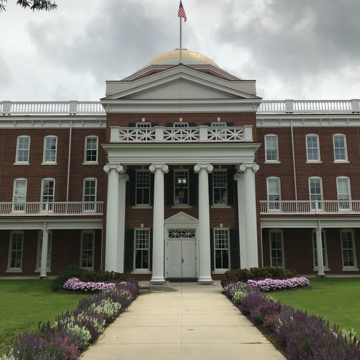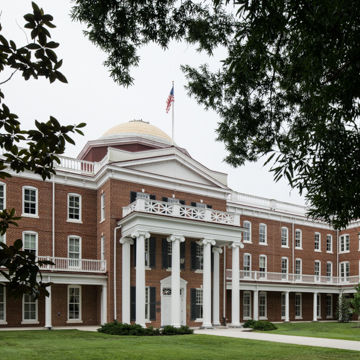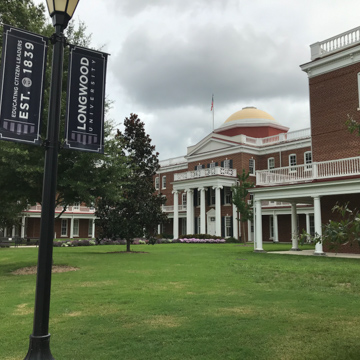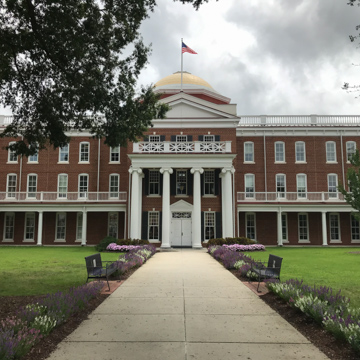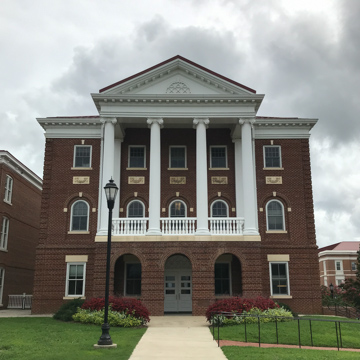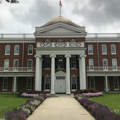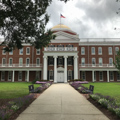You are here
Longwood University
Founded as the Farmville Female Seminary, the school was acquired by the state in 1884 and thus became Virginia's first state institution of higher learning for women. After a number of name changes, the school became Longwood College in 1949, was made coeducational in 1976, and was designated Longwood University in 2001. Now with more than 4,000 students, the university has developed from its High Street frontage into a suburban campus of more than sixty acres.
The oldest buildings stretch the length of a double block on High Street. Their siting and designs are clearly influenced by Thomas Jefferson's University of Virginia, as well as a Beaux-Arts taste for complex but orderly massing. Ruffner Building (mid-19th century; 2005 rebuilt), the most impressive of the string of classical brick buildings, may have contained the original main building for the Female Seminary, along with additions and modifications made over time. Destroyed by fire in 2001, it was reconstructed based on the original. The three-story building has a three-bay pedimented central block flanked by seven-bay wings with three-bay transverse pavilions, which together form a U shape facing the street. The wings and pavilions are linked by balustraded colonnades and a two-story Ionic portico shelters the pedimented entrance. Rising above the hipped roof is the low dome of the central block's interior rotunda, an explicit reference to the rotunda at Jefferson's University of Virginia. Grainger Hall (1902–1905, Frye and Chesterman) also was rebuilt after the fire. It is a classical two-story brick structure over a high basement and entered through a colossal Ionic portico over brick arcading.
Writing Credits
If SAH Archipedia has been useful to you, please consider supporting it.
SAH Archipedia tells the story of the United States through its buildings, landscapes, and cities. This freely available resource empowers the public with authoritative knowledge that deepens their understanding and appreciation of the built environment. But the Society of Architectural Historians, which created SAH Archipedia with University of Virginia Press, needs your support to maintain the high-caliber research, writing, photography, cartography, editing, design, and programming that make SAH Archipedia a trusted online resource available to all who value the history of place, heritage tourism, and learning.















